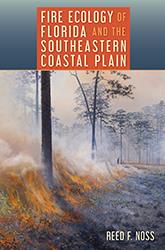Cattleyas, first introduced in 1818, are the flowers whose form and color defined the essence of tropical orchids for generations to come. This helpful and informative book describes each classic Cattleya species in fascinating detail and includes all that is required to appreciate and grow cattleyas successfully.
Browse by Subject: Natural History
Please note that while you may order forthcoming books at any time, they will not be available for shipment until shortly before publication date
Addressing the threatened future of chocolate in our modern world, Dale Walters discusses the problems posed by plant diseases, pests, and climate change, looking at what these mean for the survival of the cacao tree.
In this eye-opening journey through some of America’s most innovative landscape architecture projects, Charles Flink shows why we urgently need greenways. A leading authority in greenway planning, design, and development, Flink presents inspiring examples of communities that have come together to build permanent spaces for the life-sustaining power of nature.
In Wild Capital, Barbara Jones demonstrates that looking at nature through the lens of the marketplace is a surprisingly effective approach to protecting the environment. Showing that policy-makers and developers rarely associate wild places with monetary values, Jones argues that nature should be viewed as a capital asset like any other in order for environmental preservation to be a competitive alternative to construction projects.
Wildflowers of Florida and the Southeast provides photographs and concise descriptions for many of the plants that occur in Florida and throughout the Gulf and Eastern Coastal Plains, particularly from North Carolina west into eastern Texas.
A biodiversity hotspot, Florida is home to many ecosystems and species that depend on frequent fire to exist. In this book, Reed Noss discusses the essential role of fire in generating biodiversity and offers best practices for using fire to keep the region’s ecosystems healthy and resilient.
When scientist JLB Smith published Old Fourlegs: The Story of the Coelacanth in 1956, he created an international sensation. A dramatic account of the discovery of a creature thought to have been extinct for 65 million years, the book brought science into the living rooms of thousands. It was published in six English editions and translated into ten foreign languages. The Annotated Old Fourlegs brings this incredible story back to life for today’s readers.
Tapping the Source takes us inside the UF Water Institute, where talent from throughout the university address complex water issues through innovative research, education, and public outreach programs.
Because of the occurrence of mosquito-borne diseases and the widespread distribution of mosquitoes as pests to humans, professionals must know how to identify them. With its wealth of information, this book is the only one of its kind available for specialists working on mosquito-borne diseases and in mosquito control units, and for introductory and advanced students who study entomology.
From the Everglades to Maine in the footsteps of Edwin Way Teale











